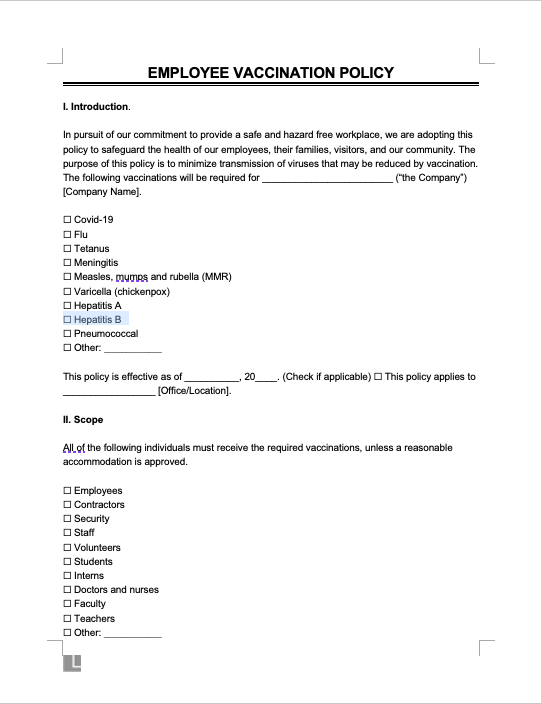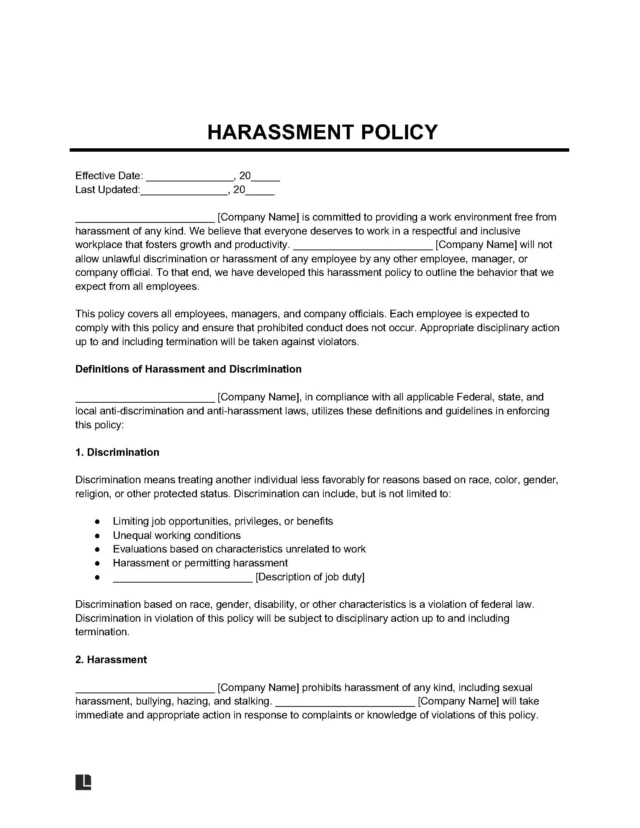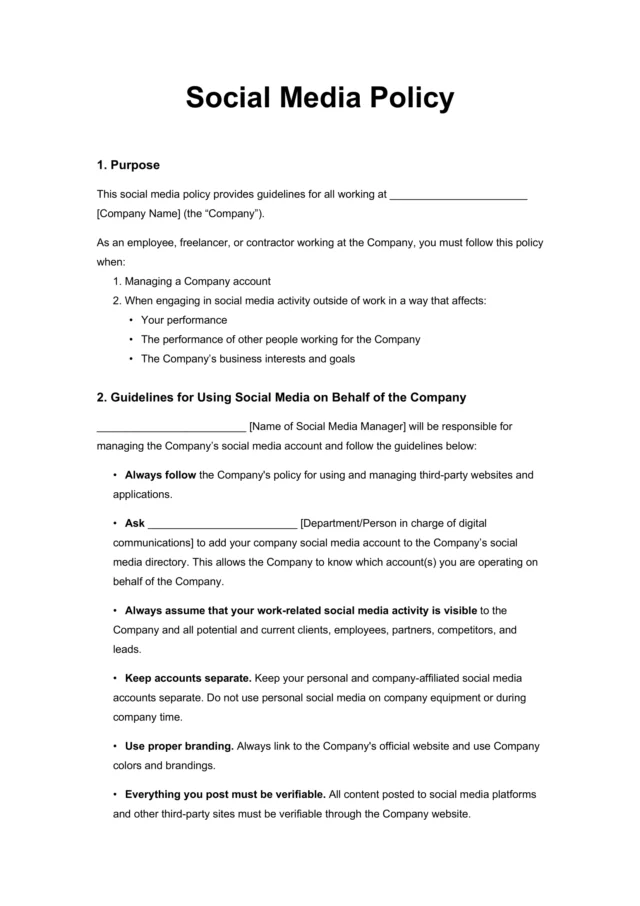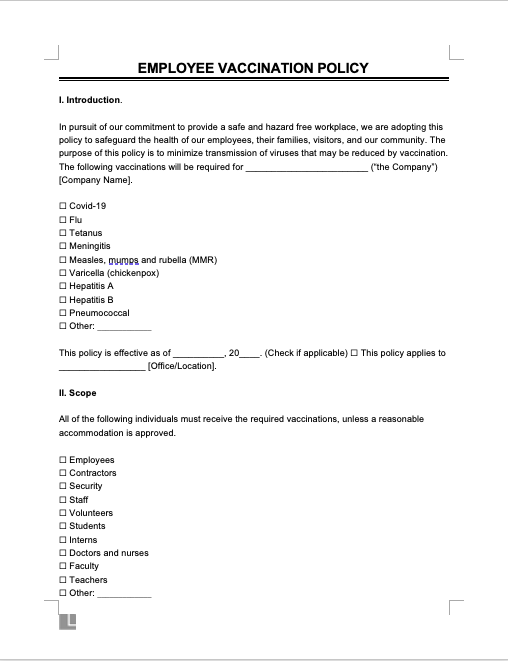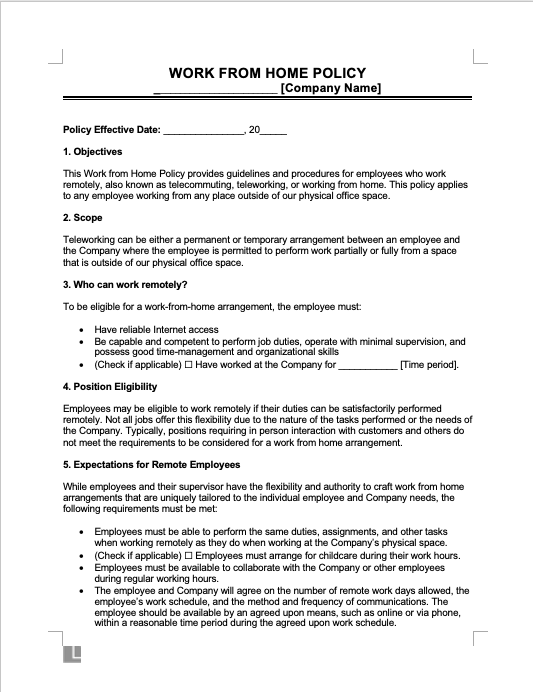What Is a Remote Work Policy?
A remote work policy is a binding policy between you and your employees that governs their responsibilities and expectations while working from home. Most commonly, it defines who has permission to work from home and in what capacity. It may also outline the process employees must use when requesting to work from home and discuss the approval process.
Whether working from home is optional or mandatory for your employees, this document allows your company to ensure employees are successful while engaging in remote work. It protects their well-being and productivity and your business’s standing. The policy clarifies expectations and documents your procedures if an employee violates them.
What to Include in a Remote Work Policy
Include the following elements in your company’s remote work policy:
-
Eligibility: Articulate which employees are eligible to work from home and whether they can work remotely full-time or part-time. Clarify if they must commute to a physical location for a minimum number of days a week.
- Furthermore, you can state the requirements for an employee working from home. For example, you may require them to have a reliable internet connection and maintain a distraction-free working space. If they can’t provide these key elements, you may have them come into the office instead.
- Approval Process: Provide details regarding the approval process to transition to remote work and who makes these decisions.
- Compensation and Benefits: Clarify that the job role, rather than the remote work arrangement, determines an employee’s compensation and benefits. If applicable, you can state that the remote work situation doesn’t affect an employee’s time off, retirement packages, pay, or health insurance coverage.
- Expense Reimbursement: Include how much the company pays for personal internet service and phone bills.
- Work Schedule: Establish acceptable shifts and work hours to ensure enough employees are available to perform essential tasks.
- Productivity: Set productivity standards to ensure workers maintain the same focus they would with onsite supervision.
- Dress Code: Establish dress code criteria for virtual meetings that employees will have with leadership and clients. It may complement the dress code information in your employee handbook with some adjustments as necessary.
- Communication Practices: Define how employees will remain in touch, including via regular team meetings, to make up for the lack of face-to-face interactions.
- IT Requirements: Explain that off-site workers must have electronic devices and Wi-Fi capabilities to perform tasks without technological setbacks.
- Cybersecurity: State the cybersecurity requirements that employees must implement to prevent hackers from breaching the business network, such as using virtual private networks (VPNs). Your policy can also limit endpoint devices to only those vetted by the IT department or managed services provider.
Compliance with Company Policies
Ensure consistency with other company policies when writing your remote work policy to ensure it doesn’t conflict with any existing guidelines regarding your company’s work processes. Some other policies to consider when drafting your work-from-home guidelines include the following:
- Attendance: Outlines the expectations for employees’ attendance and availability at work.
- Data Protection: Explains how employees should protect sensitive company data.
- Anti-Discrimination/Equal Opportunity: Describes the methods in place to ensure equitable treatment by employers to employees.
- Dress Code: Establishes standards for how employees should present themselves in different situations.
- Social Media: Explains how employees should interact on company social media accounts and how they should depict themselves on personal social media accounts.
- Confidentiality: Requires employees to keep customer information and proprietary company details private.
- Code of Conduct: Establishes how employees should act in the workplace.
How to Write a Remote Work Policy
Step 1 – Outline the Objectives
Clearly outline what you want the remote work policy to accomplish. In most cases, the objective is simple: to establish guidelines for any employee who is telecommuting or working from outside a physical office space.
Step 2 – Define the Scope
Detail the policy’s scope, whether it’s for a permanent or temporary arrangement or both. Specify where the employee is permitted to work.
Step 3 – Explain Who Can Work Remotely
Explain who is eligible to work from home. Consider the following factors to determine who can work from home:
- Roles and Job Duties: Employees can easily perform some roles from home, while others may have tasks that require them to be onsite. For example, a role that involves onsite maintenance or regular customer interaction may not be eligible for remote work.
- Software/Equipment Requirements: Some employees may need specific software or equipment that isn’t feasible to access outside of an office environment.
- Tenure: As an employer, you may make working from home an earned benefit or a possibility after a probation period because of the responsibility and accountability it requires.
- Security Risks: Some jobs could be too vulnerable to cybersecurity risks when based at home.
Step 4 – Establish Expectations
Lay out the expectations of your employees working from home. State that remote employees must perform the same duties, assignments, and other tasks when working from home as in the office.
You might also want to assert that remote employees must be able to communicate and collaborate with the company and other employees during specific hours. You could also detail how many days (if not all) employees can work from home.
Your remote work policy should state when you expect the employee to work, including the days and times. If you wish to provide flexibility in hours, you can set other criteria for how and when they must accomplish their work.
Step 5 – Define Security Measures
Highlight the importance of security and explain that remote employees must protect the proprietary company and customer information accessible from their remote workspace.
Security measures include password management, encryption, locked filing cabinets, and other measures required to keep information secure. You can also state whether employees should use a VPN.
Step 6 – Clarify the Provision of Equipment
Detail what office supplies or furnishings you will provide to remote employees. You can also include whether the business will contribute to the cost of working from home, such as electricity or internet access.
You will also want to include information on how the employee should return the equipment they received if their employment ends.
Step 7 – Establish the Approval Process
Outline the company approval process for working from home. State whether employees need to seek permission to work remotely. Define how you can make arrangements for employees on family or medical leave.
This section could also cover hourly, non-exempt employees who are still required to track their hours. Since they are at home, you should create a procedure for remote workers to track their hours and submit them to a supervisor.
Informal Work-from-Home Arrangements
A formal remote work policy won’t cover informal remote work arrangements. If your company allows informal arrangements, they must establish them on a case-by-case basis.
Step 8 – Provide a Point of Contact
Provide an HR employee’s name and contact information so the remote worker can contact them with any questions or concerns about the policy.
Tips When Writing a Remote Work Policy
Here are some additional considerations and tips when writing a remote work policy:
- Include remote monitoring. Remote monitoring software lets you track your employees working remotely, including their communication, work time, and usage habits. If you decide to use any monitoring, you should include the methods in your policy.
- Consider unique expectations. Consider the individual requirements of a particular job. For example, you may require certain employees to attend in-person training events to ensure they have the necessary knowledge to perform their job duties.
- Create enforcement mechanisms. Document enforcement mechanisms and disciplinary action procedures to ensure you have protocols to follow if an employee breaches the at-home work agreement.
- Provide educational resources for employees’ health. Remote work can cause physical and mental health issues, including technology fatigue, ergonomic problems, loneliness, isolation, and communication challenges. Provide remote employees with resources on how they can manage these issues.
Sample Remote Work Policy
Download a remote work policy template to create an arrangement that works for your employees:
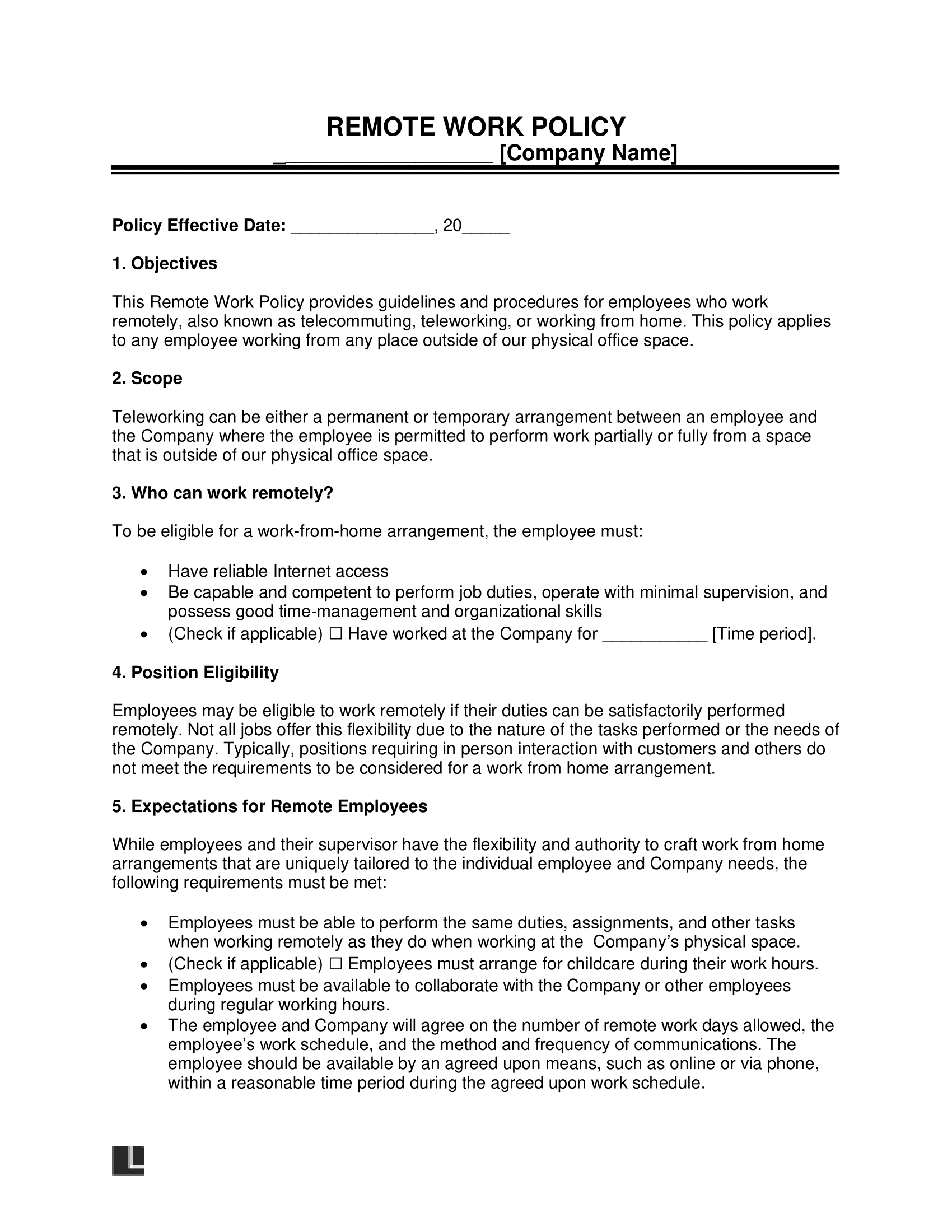
Frequently Asked Questions
How do I ensure team productivity in a work-from-home setting?
Employers can minimize distractions and procrastination by employees by establishing daily schedules, virtual meeting times, and productivity reviews. These initiatives and other expectations provide a structure that helps employees succeed.
What’s the best way to maintain communication with remote employees?
There are several effective ways to maintain communication with remote employees:
- Use diverse communication tools such as phone calls, email, video conferencing, and instant messaging to cater to different needs, from quick updates to detailed discussions.
- Schedule regular one-on-one check-ins and team meetings to keep everyone aligned and informed.
- Establish clear communication norms, including preferred channels and response times, to ensure accessibility.
- Encourage open communication and empower employees to share their ideas and concerns.
What makes a remote work policy effective?
A remote work policy is most effective when an employer drafts it carefully and thoughtfully. Using a template is a good starting point, but you must be able to modify it to fit your workplace’s unique needs.
What other options can I offer employees for an improved work-life balance?
Not every position is conducive to fully remote performance. Other options that enhance the live-work balance involve flex time, four-day work weeks, alternative schedules, and integrating wellness programs into the office setting.
How do I maintain company culture with remote work?
Here are some ways to maintain company culture with remote work:
- Strengthen team morale by organizing team-building activities, such as collaborative projects, online social events, and virtual lunch breaks.
- Encourage employees to meet in person when possible to facilitate face-to-face communication.
- Offer public recognition and rewards for superior work performance.
- Encourage employees to keep their work life separate from their personal life to avoid overworking.
- Invite feedback and be willing to adapt as necessary to account for employees’ well-being.




